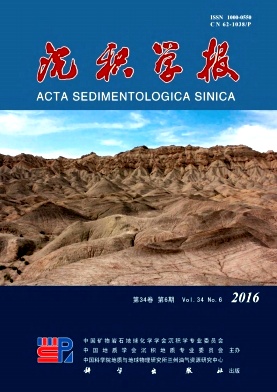Evolution of Cambrian Sedimentary Environment and Ocean-Land Coupling of the Western Tarim Carbonate Platfrom
doi: 10.14027/j.cnki.cjxb.2016.06.008
- Received Date: 2015-09-06
- Rev Recd Date: 2016-03-28
- Publish Date: 2016-12-10
-
Key words:
- western Tarim Platform /
- Cambrian dolomite /
- sedimentary environment /
- CIA of acid-insoluble residua /
- ocean-continent coupling
Abstract: As the transition zone between terrestrial and marine environment, carbonate platform sediments record information both from ocean and land. Some geochemical research are carried on Cambrian carbonates and their acid-insoluble residua based on sedimentary facies analysis, focused on development of sedimentary environment, change of paleosalinity, sea level fluctuations, evolution of terrestrial chemical weathering intensity and climate change. Lithological and sedimentological research show that sedimentary facies of the Western Tarim Carbonate Platform in Cambrian was mainly restricted platform, restricted-evaporite platform or evaporite platform. Geochemical characteristics of carbonates is usually generated by sedimentation and reformed by diagenesis. The elemental composition and O isotope of our samples are respectively affected by sedimentary micro-facies and water-rock interaction, only Sr/Ba, Fe/Mn and C isotope of primary or penecontemporaneous dolomite can be used to indicate paleosalinity, offshore distance and other characteristics of sedimentary environment. Evolution of terrestrial chemical weathering intensity and climate change can be reflected by CIA(chemical index of alteration) of the carbonates' acid-insoluble residua. In Cambrian, restricted platform was developed in western Tarim when the RSL(relative sea level) is at high position, sedimentary environment was characterized by relatively low salinity, far offshore distance and weak biological activity, with moderate terrestrial chemical weathering and mild climate. On the contrary, when the RSL is relatively low, evaporite platform is developed and with sedimentary environment characterized by high salinity, near offshore distance and strong biological activity, the terrestrial chemical weathering is intense, indicating hot or possibly humid climate. The situation when restricted-evaporite platform developed is between the two forementioned. Relatively long-period evolution of the Western Tarim Carbonate Platform corresponding to facies' development may be controlled by global climate change and sea level fluctuations. Concretely, the evolution of marine sedimentary environment is mostly controlled by RSL change, and the change of terrestrial chemical weathering flux is mainly controlled by climate change. High consistency can be found among sedimentary facies sequences, evolution of marine sedimentary environment, change of terrestrial chemical weathering intensity, relative sea level change and climate change. Therefore, it represent a close ocean-land-climate coupling of the western Tarim Carbonate Platform in Cambrian.
| Citation: | LIU PeiXian, GUAN Ping, FENG Fan, JIA WenBo, ZHANG Wei, DENG ShiBiao, JIN YiQiu. Evolution of Cambrian Sedimentary Environment and Ocean-Land Coupling of the Western Tarim Carbonate Platfrom[J]. Acta Sedimentologica Sinica, 2016, 34(6): 1092-1107. doi: 10.14027/j.cnki.cjxb.2016.06.008 |






 DownLoad:
DownLoad: